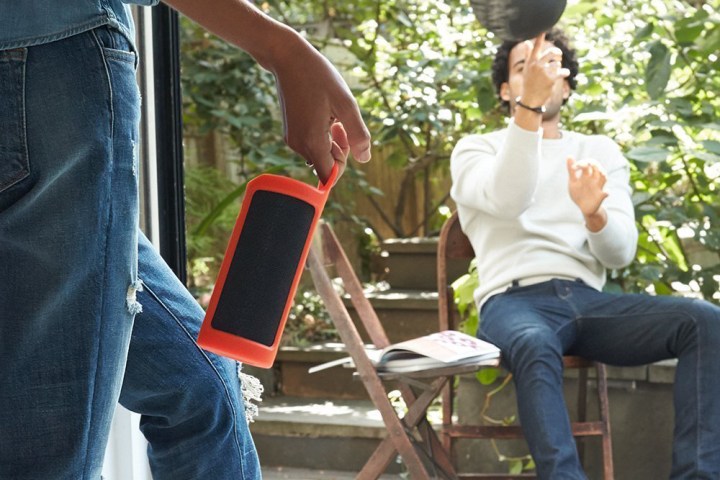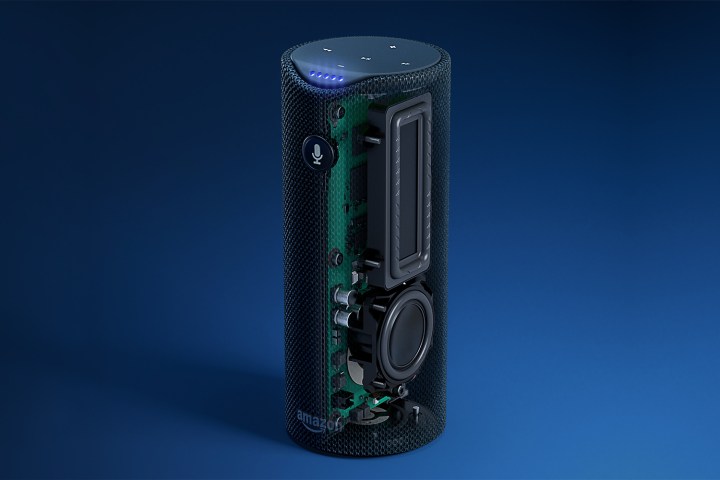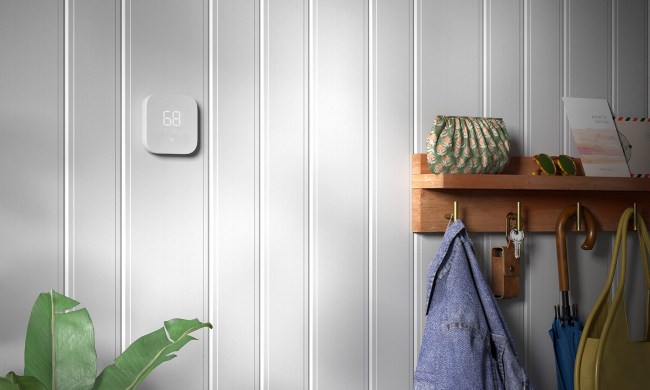
Can’t decide which Amazon device to opt for? We’ve also compared the Echo to the Echo Show, as well as the Google Home and Apple’s forthcoming HomePod.
Sound
Amazon labels the Tap as a portable Bluetooth speaker, while calling the Echo a smart home device. This distinction becomes clear when comparing the audio quality between the two devices. The Tap has dual-stereo speakers with Dolby processing, allowing you to revel in 360-degree omni-directional audio. The Echo also has 360-degree omni-directional audio, but features downward-firing speakers. As we pointed out in our Amazon Echo review, the Echo’s bass response isn’t as deep or prominent as other devices on the market, such as the budget-priced UE Mini Boom. The treble isn’t nearly as clean, either, though the device is plenty loud enough for cooking and cleaning. The Tap features a better speaker system than the Echo, which can be expected given the former is a newer piece of technology that’s intended to be a speaker above all else.

Both the Tap and the Echo can connect to Wi-Fi and Bluetooth, allowing you to connect a range of devices. Along similar lines, both can stream Amazon Music, Spotify, Pandora, TuneIn, iHeartRadio, and more while connected to Wi-Fi. In terms of music streaming services, the two devices are near equal. The concern about Wi-Fi connectivity is really only applicable to the Tap, which is portable. This means you won’t always be connected to your home Wi-Fi network like you will be with the Echo.
The Tap also sports a 3.5-millimeter audio jack, meaning you can connect your phone to the speaker using a cord instead of using Bluetooth. The Echo does lacks this feature and depends solely on Bluetooth to connect to your personal devices.
Functionality
Once both devices are connected to the internet and the smartphone app, you can access Alexa. The Tap, however, is not waiting for you to say “Alexa” to wake it up. Instead, the smart speaker utilizes a “tap and ask” system in conjunction with your Wi-Fi network. Once set up, tap the microphone button located on the end of the device and ask Alexa to do something — just like you would with the Echo. If you do want to use voice control with your Tap, going to Settings and select Hands Free within the Alexa app. This allows you to control the Tap without using your hands, but will deplete your battery much faster given the microphone will remain on. Nonetheless, even with the microphone on, the Tap should last for roughly nine hours on a single charge.
Unlike the Tap, you can always access Alexa from your Echo when it has internet connection. Since the Echo must remain plugged in in order to work, it will almost always have an active internet connection. The location of your Echo is more limited, however, because it always has to be plugged in. And unlike the Tap, the Echo always works hands-free — there’s no way to utilize a “tap and ask” system.

One thing the Echo can do that the Tap cannot is make calls without your phone. Via the Alexa app, you can call other people who also have the app. Once enabled, Alexa will let you know when someone is calling, and a green light ring will appear on your supported Echo device. Then, you can ask Alexa to answer or ignore the call. The Tap does not support this feature yet.
Skills
Both devices can access Skills while connected to the internet. If you enable Skills on your Alexa-equipped device, you can order an Uber, check the status of your flight, find your phone, and carry out a host of other useful actions (many of which we’ve detailed in our roundup of the most useful Alexa skills). There’s currently a wide selection of Skills to choose from — including a Digital Trends Skill — and both the Tap and Echo can perform these Skills on a moment’s notice.
Design
While neither device will win any awards when it comes design, these black pillars keep it simple and understated. The Tap looks similar to the Echo in that both are cylindrical and black, though the similarities stop there. The Tap is shorter and slimmer than the Echo, making it better suited for portable use. It is intended for both indoor and outdoor use and has a rough texture along its sides, providing a protective layer against things like water. Unfortunately, the Tap does not have an IP rating, meaning it’s not water-resistant like most Bluetooth speakers on the market.

The charging cradle for the Tap — a small, smooth base — makes charging simple and hassle-free. You simply place the Tap on the charging cradle to charge the battery, and you can continue to listen to music and use your Tap while it is charging. One of the key design differences between the Tap and the Echo is the number of controls on the Tap. The top of the Tap has controls for adjusting volume and playback, the front of the speaker displays the microphone button, and the back houses the power button and connectivity buttons. The back also features both an auxiliary port and a MicroUSB port.

The presence of a large number of buttons and ports on the Tap is different than the Echo. The Echo features a microphone off button and an action button, both of which are located on the top of the device. The volume can be manually controlled via the volume ring on the top of the Echo, but most people will likely opt for the voice control option. The Echo is smooth, in contrast to the Tap, and the bottom half features holes for the sound to escape. Again, the Echo must be plugged in order to work, which limits where you can place it.

Both devices feature different looks and functionalities. Since the Tap is intended to be more of a portable speaker, it makes sense to include more buttons that allow you to control song selection and volume when you’re not connected to the internet. The Echo is voice-controlled, so the buttons you need to control music and other functions are not necessary.
Pricing and availability
Both the Echo and the Tap are available now, for $130 and $180, respectively. As a speaker, the Tap is expensive, but since it grants access to Alexa, you pay for that extra assistance. You can also get an Amazon Tap Sling Cover for $20 if you’re looking to add some protection while on the move.
Conclusion
The Tap is good as a speaker but not as a smart home device, whereas the Echo is good as a smart home device and not a speaker. When considering which to buy, consider what you’ll be using the device for. If you’re looking for something that you can use around your house to make lists, set reminders, and ask questions, you should get the Echo. You will be able to talk to it from across the room and know that it will be connected to the internet. If you’re looking for something you can play music on and take with you, then the Tap is probably a better bet. It has superior sound and protection that the Echo does not have.

